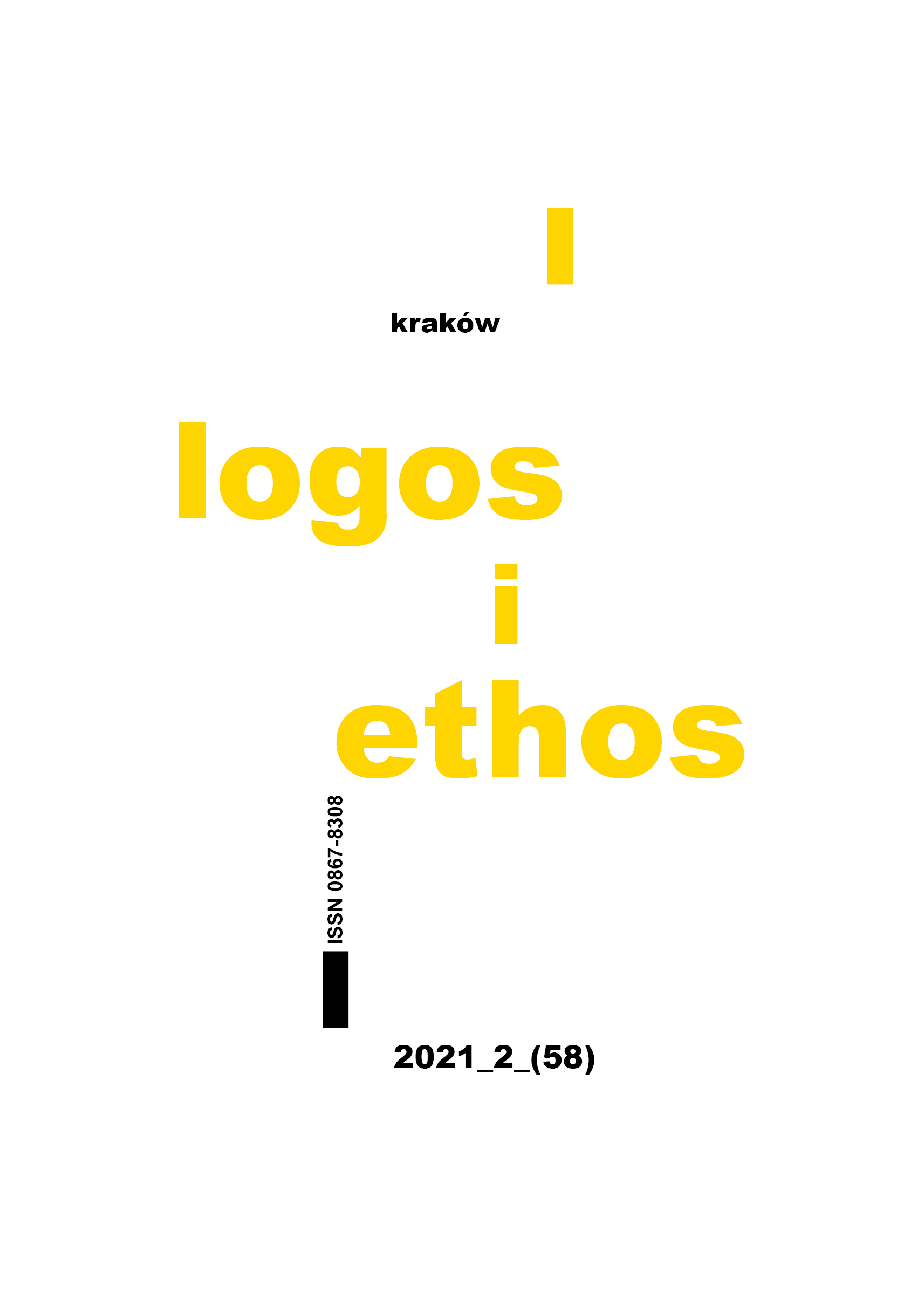Between an Object and a Person: an Inverted Image / Icon
DOI:
https://doi.org/10.15633/lie.4166Słowa kluczowe:
object, person, icons, latreia, proskynesisAbstrakt
Relations between persons in the contemporary world often resemble those of the same persons towards objects. We are accustomed to ‘use’ – and even see – others as if they are, to put it in Kantian terms, merely a means to an end, and not as if they are an end in themselves. Such blurring of lines between objects and persons surely has significant moral and political consequences. However, in this paper I reach instead for a very traditional example and suggest it as a possible model for understanding these contemporary issues. I’d like to offer an analysis of icons, with regard to the concepts of latreia (worship) and proskynesis (devotion), developed and discussed in the Byzantine empire during the era of iconoclasm. By revisiting this old quarrel, I wish to invert the issue of persons becoming (like) objects, since in the case of the icons the question is whether an object can and should be treated as a person. Such an inverted image could, in my opinion, offer us a new perspective on contemporary intersubjective relations and present us with a double optic, which can teach us to distinguish between esteem for objects and respect for persons.
Bibliografia
Ando C., Signs, Idols, and the Incarnation in Augustinian Metaphysics, “Representations” (2001) No. 1, pp. 24–53.
Augustine, De Doctrina Christiana, Oxford 1995.
Bell M., On the Virtue of Taking Oneself Lightly, in: Oxford Studies in Normative Ethics, vol. 9, ed. M. Timmons, Oxford 2019.
Besancon A., The Forbidden Image: An Intellectual History of Iconoclasm, Chicago 2000.
Brubaker L., Haldon J., Byzantium in the Iconoclast Era, C. 680–850: A History, Cambridge 2011.
Chisolm R.M., Person and Object: A Metaphysical Study, London 2013.
John of Damascus, Treatise III, in: Three Treatises on the Divine Images, New York 2003.
Ferraris M., Art as Document, in: Wittgenstein and Aesthetics: Perspectives and Debates, eds. A. Arbo, M. Le Du, S. Plaud, Frankfurt am Main 2012.
Herrin J., Byzantium: The Surprising Life of a Medieval Empire, Princeton 2009.
Horkheimer M., Critique of Instrumental Reason, London 2013.
Irwin T., Ethics Through History: An Introduction, Oxford 2020.
Jay M., Reason After Its Eclipse: On Late Critical Theory, Madison 2016.
Karahan A., Byzantine Iconoclasm: Ideology and Quest for Power, in: Iconoclasm from Antiquity to Modernity, eds. K. Kolrud, M. Prusac, Farnham 2014, pp.75–94.
Kenny D.A., Interpersonal Perception: A Social Relations Analysis, New York 1994.
Levinson J., Aesthetics and Ethics. Essays at the Intersection, Cambridge 1998.
Lucas P., Ethics and Self-Knowledge: Respect for Self-Interpreting Agents, Dordrecht 2011.
Mango C., The Art of The Byzantine Empire 312–1453. Sources and Documents, Toronto 2004.
Mondzain M.-J., Image, Icon, Economy: The Byzantine Origins of the Contemporary Imaginary, Stanford 2005.
Rees D.H., The Postsecular Political Philosophy of Jürgen Habermas: Translating the Sacred, Cardiff 2018.
Stern N., Ecological Aesthetics: artful tactics for humans, nature, and politics, Darmouth 2018.
Tamen M., Kinds of Persons, Kinds of Rights, Kinds of Bodies, “Cardozo Studies in Law and Literature” 10 (1998) No. 1, pp. 1–32.
West D., Object Thinking, Redmond 2004.
Pobrania
Opublikowane
Numer
Dział
Licencja
Autorzy publikujący w czasopiśmie udzielają jego wydawcy zgody o następującej treści:
- Autor zachowuje autorskie prawa majątkowe do utworu, a jednocześnie udziela wydawcy czasopisma zgody na jego pierwszą publikację w wersji drukowanej i wersji online na licencji Creative Commons Uznanie autorstwa 4.0 Międzynarodowe oraz zgody na wykonywanie opracowań, w tym przekładów.
- Autor ma możliwość udzielania zgody niewyłącznej na opublikowanie utworu w wersji, która ukazała się w czasopiśmie (np. zamieszczenia go w repozytorium instytucjonalnym lub opublikowania w książce), wraz z informacją o jego pierwszej publikacji w czasopiśmie.
- Autor może umieścić swój utwór online (np. w repozytorium instytucjonalnym lub na swojej stronie internetowej) jeszcze przed zgłoszeniem utworu do czasopisma.

